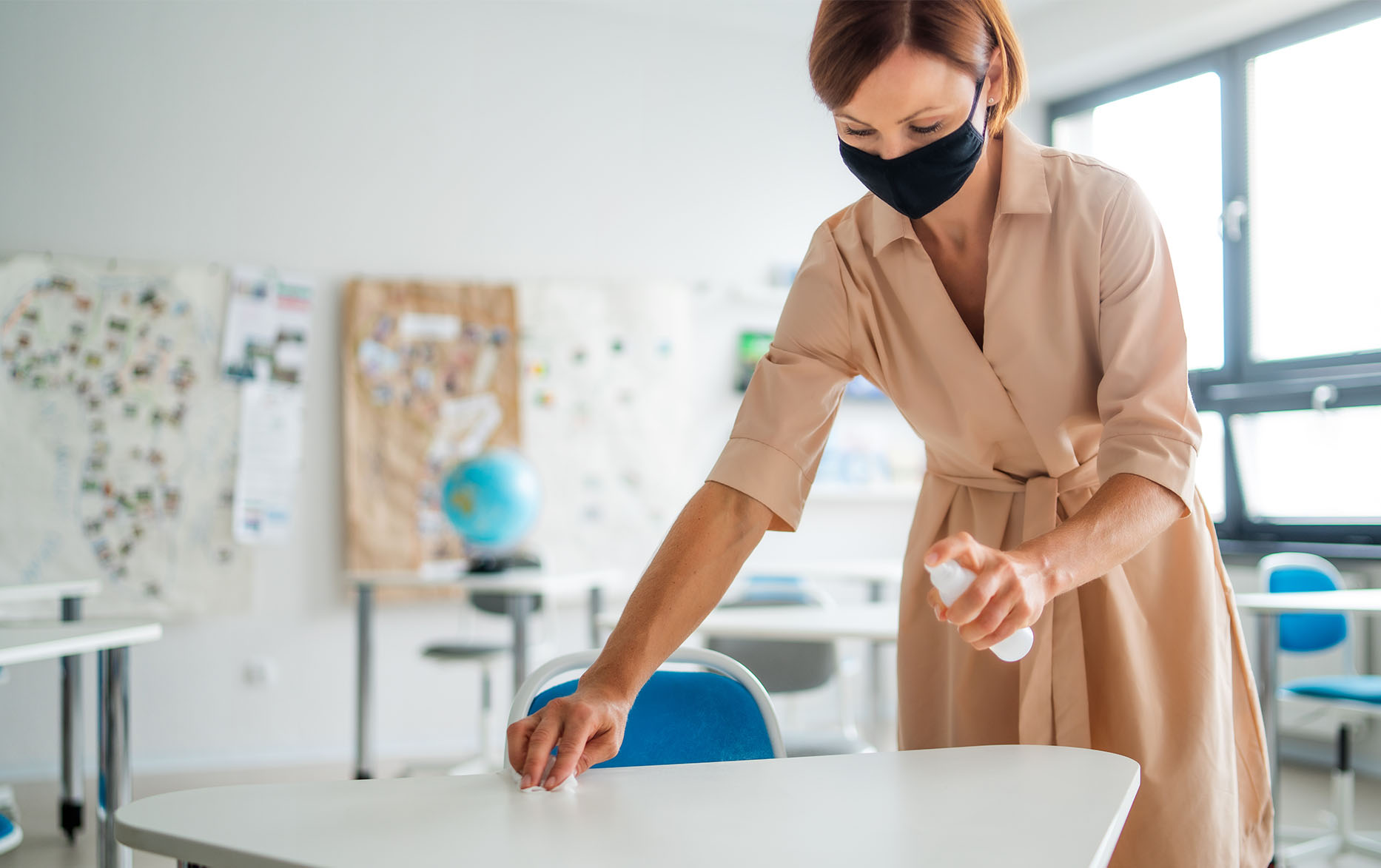

With cold and flu season kicking into high gear, and the very contagious Delta variant further prolonging the COVID-19 pandemic, we thought it was the perfect time to revisit a very important topic… CBD.
What's "CBD" you ask? CBD stands for "Clean Before Disinfecting", and it's a critical concept to understand if you want to effectively eliminate illness-causing germs in your workplace or home.
Did you know that cold and flu viruses and other germs can remain active for hours on some surfaces? Yup, it's true.
And while you might think efficiency is the name of the game when it comes to cleaning, oftentimes our cleaning shortcuts leave out critical steps in the process. One such example is when you neglect to clean a surface before disinfecting.
Many people (incorrectly) believe that disinfectants are a 2-for-1 deal that can effectively clean a surface as well as eliminate germs. Sorry to bust your bubble, but this just isn't true. In fact, this common misconception can potentially expose your household to illness-causing pathogens.
Let's take a step back and explain some of the terminology used to describe the cleaning and disinfecting process. That way when we talk about CBD, we're all on the same page.
CLEAN: The physical or mechanical removal of dirt and grime by scrubbing, washing, and rinsing. It's essentially the "elbow-grease" part of the process, where you scrub a surface with a cleaning product (or even your hands with soap and water).
SANITIZE: Reducing germs and bacteria down to a less dangerous level on surfaces and in laundry.
DISINFECT: Killing all applicable bacteria and viruses on a surface to an EPA-designated, extremely low tolerance. Disinfecting destroys or inactivates both the bacteria and viruses identified on the product's label (like influenza and rhinovirus) on hard, nonporous surfaces.
KILL TIME: Also referred to as dwell time or contact time. All disinfecting products need to stay wet on a surface for a specific length of time to kill bacteria and viruses. This is what we mean when we say kill, dwell, or contact time. The kill time varies by product and can always be found on the product label.
At this point you might be asking yourself, isn't disinfecting enough? Why do I need to bother cleaning something before I reach for a disinfectant?
The Food Standards Agency (FSA) recommends that surfaces be cleaned before disinfecting, so illness-causing pathogens don't have a place to hide. According to the FSA, "chemical disinfectants only work if surfaces have been thoroughly cleaned first to remove grease and other dirt".
In addition, the Centers for Disease Control and Prevention (CDC) states that "cleaning works by using soap (or detergent) and water to physically remove germs from surfaces. This process does not necessarily kill germs, but by removing them, it lowers their numbers and the risk of spreading infection."
The CDC further clarifies that cleaning and disinfecting go hand-in-hand, and to fully decontaminate a surface, both steps must be implemented.
As an example, if you're baking a cake, there's a good chance your kitchen counter will end up covered in egg, flour, sugar, and other ingredients. This can potentially lead to Salmonella contamination, which can cause serious illness.
To fully eliminate the risk, it's important to first clean your counter with an all-purpose cleaner such as Simple Green by wiping down the surface to remove the visible dirt. Then once your surface is prepped, you can use a disinfectant to eliminate any lingering germs.
It's important to keep in mind that not all disinfectants are equal, so be sure to follow the label directions for proper disinfecting procedures. You want to ensure you leave the disinfectant on wet long enough to reach the required kill time.
You may have noticed that there are a number of combined cleaner/disinfectant products on the market which offer a tempting one-step solution to the recommended two-step CBD process.
And while two-in-one cleaner/disinfectants are somewhat effective at lifting dirt and killing surface-level pathogens, these products are not effective at thoroughly cleaning and disinfecting all at once. In fact, if you look closer the instructions will often recommend applying these products to "pre-cleaned surfaces", which brings us right back to ‘C before D'.
To protect your family from cold and flu viruses, as well as other illness-causing germs, be sure you always "C" (clean) before "D" (disinfecting) – or "CBD," for short.
STEP 1: Clean the surface with a household cleaner to remove any visible food or waste particles or fluids.
STEP 2: Once you've fully cleaned the surface, apply disinfectant according to label directions.
As the public becomes more aware of the risks and necessary protective measures for illness prevention in a pandemic-impacted world, information is your greatest weapon against unwanted contamination. Following the "CBD" method of cleaning and disinfecting will help you maintain a cleaner, healthier home or office.
FEATURED ARTICLES